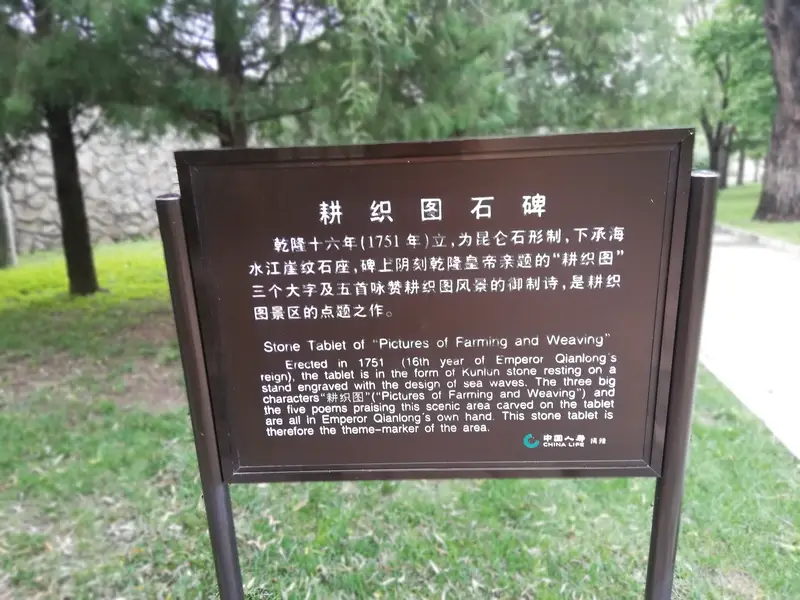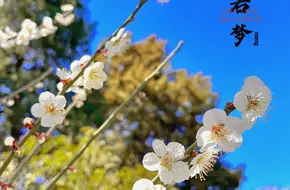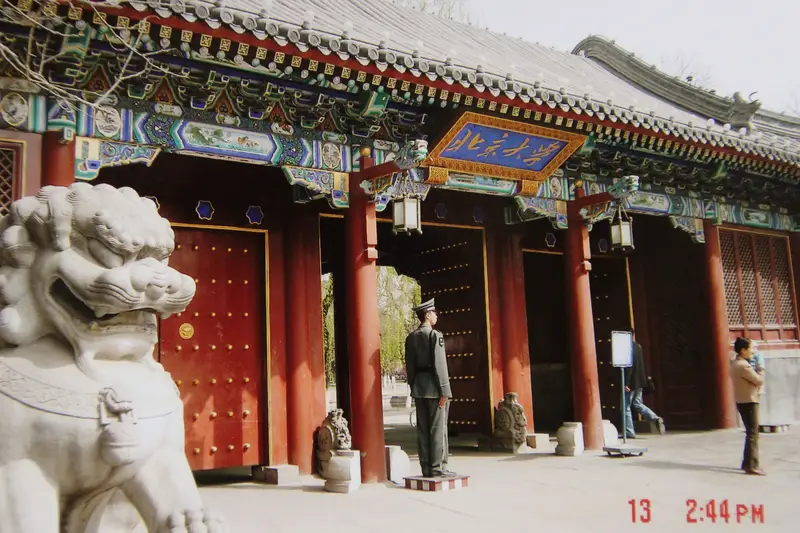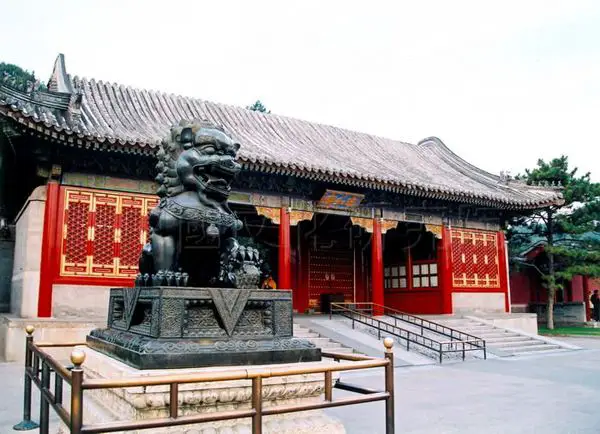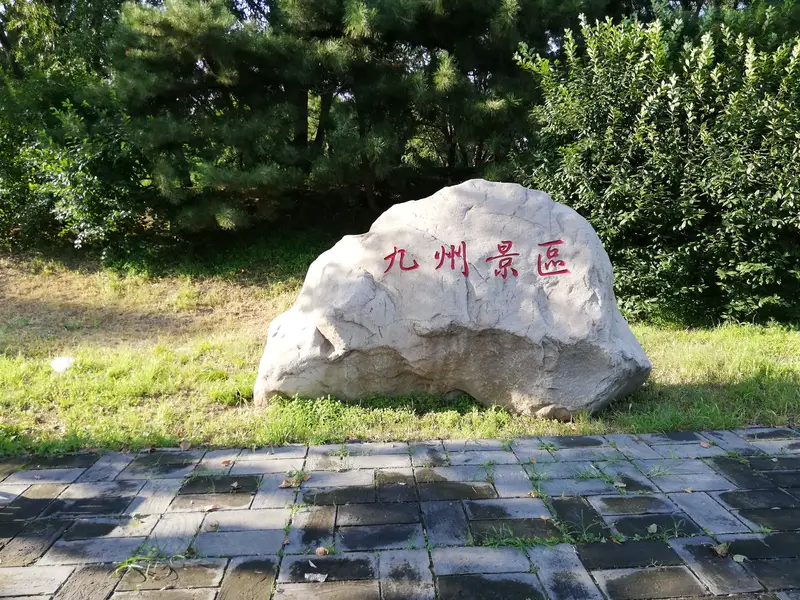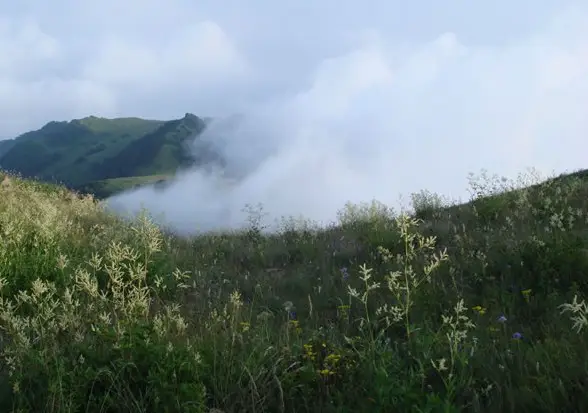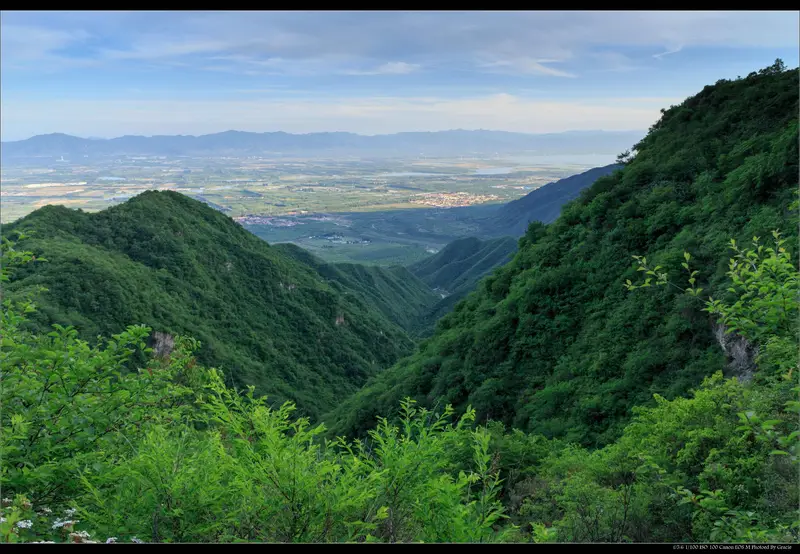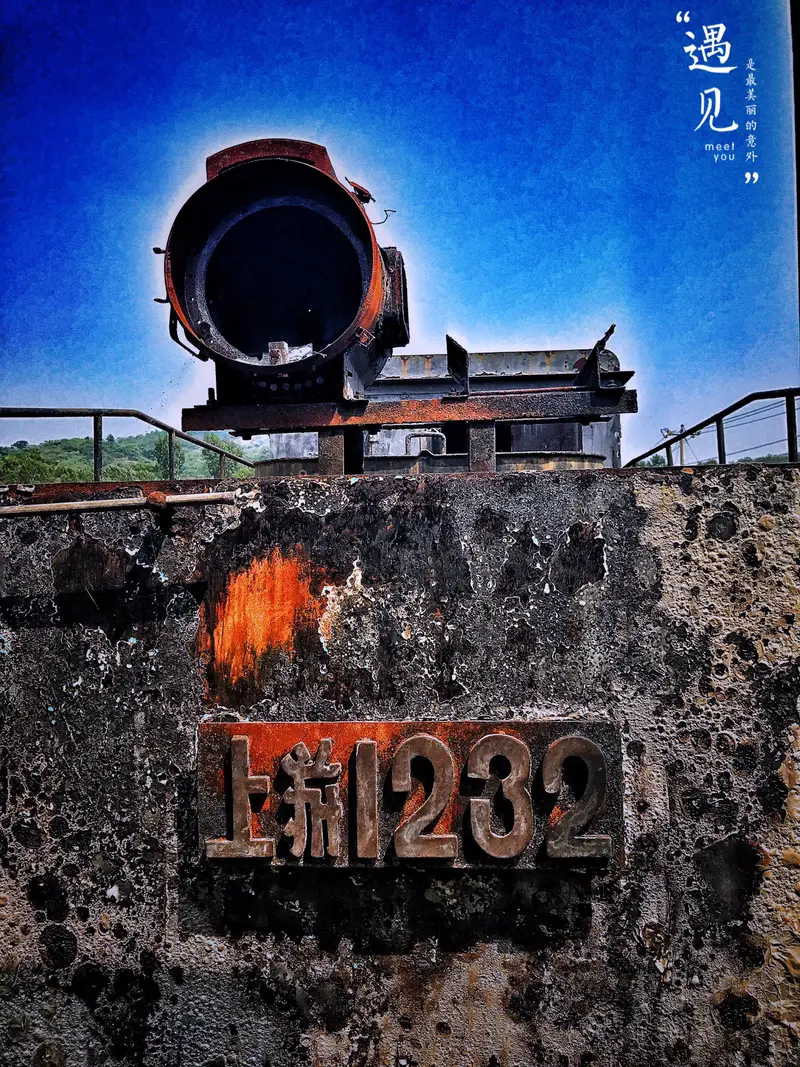Gengzhi Tu Stele lies within the Summer Palace (Yiheyuan) in Beijing’s Haidian District. To reach it, take Metro Line 4 to Beijing Zoo Station, then walk or transfer to buses heading to Xinjian Gongmen (New Entrance). The stele is near the Wenchang Yuan (Palace of Literature and Scholarship) within the palace grounds.
Natural Scenery
The stele sits amid the Summer Palace’s royal gardens, surrounded by tranquil lakes, ancient cypress trees, and pavilions. Nearby, Kunming Lake sparkles under the sky, while Longevity Hill (Wanshou Shan) provides a lush backdrop. It’s a peaceful spot to pause and connect with China’s imperial past.
Cultural Heritage
Gengzhi Tu Stele is a Qing Dynasty treasure dating back to 1769. Emperor Qianlong commissioned artists to carve scenes from an ancient farming and weaving manual. Today, 23 surviving stones remain, each showing farmers planting, harvesting, or weaving textiles. Each panel includes poems in seal script (a classic Chinese style) and plain-text explanations. Though weathered, the intricate carvings still reveal details like plows, looms, and tired workers.
Historical Stories
This isn’t just art—it’s propaganda! Qianlong used these stones to promote Confucian values, like hard work and self-sufficiency. By copying a Yuan Dynasty original, he linked himself to China’s scholarly tradition. Fun fact: The full set once had 45 stones, but many were lost or moved. Some are now in the National Museum of China, making Gengzhi Tu Stele here even more special.
Practical Tips
- Entrance: Included in the Summer Palace ticket (¥60/person).
- Guided Tours: Rent a audio guide (available in English) for deeper insights.
- Photo Spots: The stele’s moss-covered stones contrast beautifully with red palace walls. Try shooting early morning or late afternoon for soft light.
- Rest Areas: Nearby pavilions offer benches and snacks.
Immersive Experience
Walking up to Gengzhi Tu Stele feels like stepping into a time capsule. You’ll hear birds chirping and see dragon motifs on nearby roofs. Touch the cool, textured stone—it’s over **250 years old


